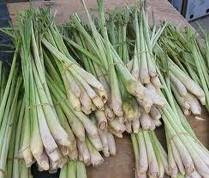Mastica comes from a tree which is a member of the pistachio nut bearing tree family. The mastica tree’s Latin name is Pistachia lentiscus and it is native to the Mediterranean region, Morocco, Iraq, Iran, the Iberian Peninsula, southern France and Turkey, as well as the Canary Islands. However the trees grown on the Greek island of Chios are the only ones that ‘weep’ Mastica ‘tears’ when the bark of the trunk is scored. The cooperative that produces mastica on the island has been granted protection designation of origin rights, as well as protected geographical indication, because of the unique nature of the trees, and the fact that the island has been producing world-famous mastica for centuries. The villages which produce mastica were fortified in Mediaeval times to protect them from pirates and others who would try to take them over, as the trade in mastica was so profitable. Indeed, the islanders were given special privileges because of the trees’ harvest by their conquerors, the Genovese and Ottoman Turks.
 Mastica is tree resin, and has been used in medicine for centuries. The ancient Greeks used it to counteract inflammation, coughs and bladder infections, and the Egyptians put it into their drinking water, to make it taste better. It is said to lower cholesterol levels and blood pressure, help in cases of diabetes, and boost the immune system. It has anti-bacterial effects and was used as a remedy for cholera. Research conducted by the University of Thessaloniki has shown that chewing mastica can reduce plaque, and a separate study by researchers from the University of Nottingham has shown that 1 gram of mastica a day can cure peptic ulcers if this is done over period of two weeks.
Mastica is tree resin, and has been used in medicine for centuries. The ancient Greeks used it to counteract inflammation, coughs and bladder infections, and the Egyptians put it into their drinking water, to make it taste better. It is said to lower cholesterol levels and blood pressure, help in cases of diabetes, and boost the immune system. It has anti-bacterial effects and was used as a remedy for cholera. Research conducted by the University of Thessaloniki has shown that chewing mastica can reduce plaque, and a separate study by researchers from the University of Nottingham has shown that 1 gram of mastica a day can cure peptic ulcers if this is done over period of two weeks. The trees on Chios are said to weep because Saint Isidorus, in 253 AD was tortured under a mastica tree. The trees weep for his suffering.
The trees on Chios are said to weep because Saint Isidorus, in 253 AD was tortured under a mastica tree. The trees weep for his suffering.In the villages which produce mastica on Chios, the Mastichochoria, the resin is harvested between June and September. After the ‘tears’ have been collected, the villagers wash each one separately and make this a social occasion. One tree will produce 200 to 300 grams of mastica each year.
Mastica is used in paints, varnishes, toothpaste, toiletries and drinks. It is used to make desserts and is one of the ingredients of loukoumia, or lokhma (Turkish Delight). You can buy it in crystal form or in a gooey liquid which you can eat like yoghurt if you have a sweet tooth. You can also get mastic gum to chew in Greece. The English word to masticate, meaning to chew, comes from the Greek mastica.
LEVANTINE CHICKEN BIRYANI
1 chicken jointed, or cut into smaller pieces
1 sprig thyme
1 handful of fresh mint leaves
salt and pepper
2 cups yoghurt
1 egg,beaten
1 tsp cornflour or arrowroot
1 tsp freshly ground black pepper
1 tsp cumin seeds, dry fried and crushed
1 tsp cardamom seeds, crushed (remove seeds from husks of green cardamoms )
1 or 2 saffron threads, crumbled
2 inch stick of cinnamon
1 large onion, sliced
6 garlic cloves, finely chopped
2 mastica crystals
oil
Garnish
50 gr toasted or dry fried almonds, chopped
30 gr pistachio nuts, crushed
1 handful fresh coriander leaves, torn finely
Method
Put mastica, chicken pieces, bay leaves, thyme, mint and seasonings into a pan, cover with water and bring to the boil. Remove scum and simmer for 40 mins, or until chicken is cooked through. Check and remove any other scum that rises to the surface during cooking.
Mix egg with the arrowroot or cornflour and beat in the yoghurt. Add spices and salt to taste.
Fry onions and garlic for a few minutes until the onions start to brown.
Put cooked chicken pieces in a large pan and pour the yoghurt mixture over them.
In another pan, put the rice and pour 4 glasses of the chicken stock over it. Allow it to absorb the stock.
Mix the onions and garlic with the rice and place over the yoghurt.
Now add water to quarter fill the pan and cook for 30 mins over a medium heat or until the rice is cooked.
Remove the pan from the heat and leave to stand, covered for 5 mins.
Turn out onto a large serving plate and garnish with the nuts and fresh coriander leaves.
This has Taste and is a Treat.





























